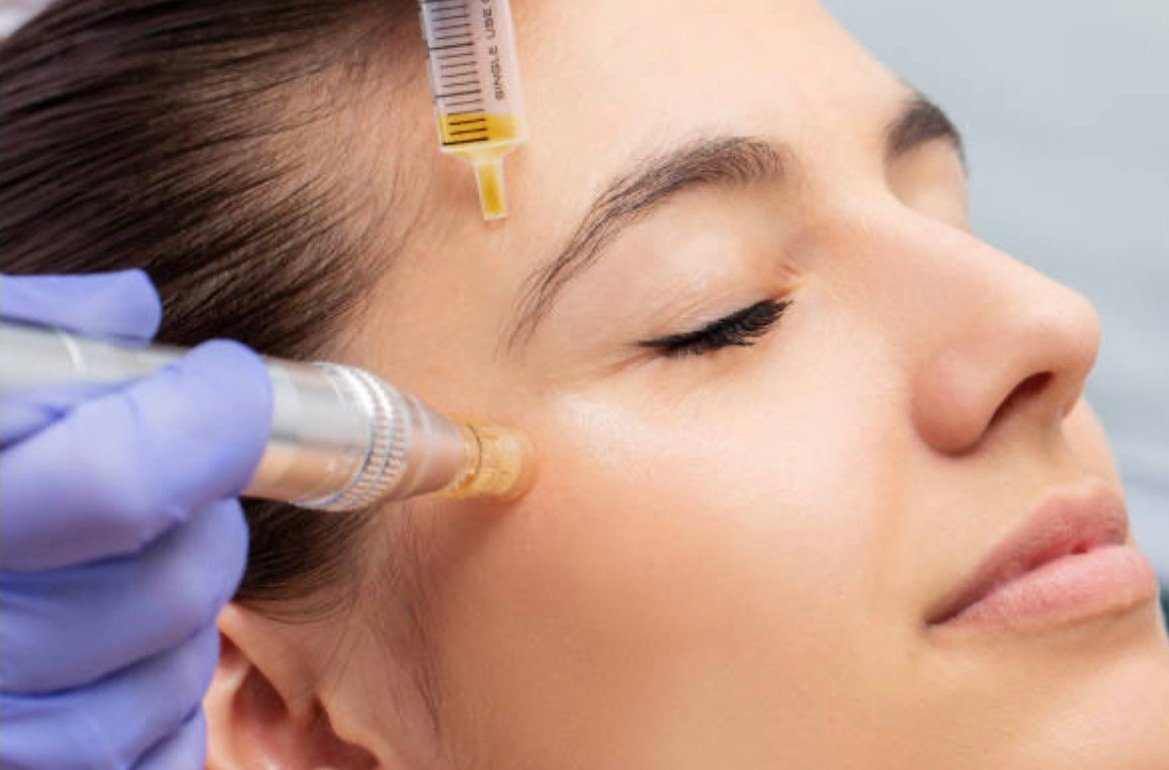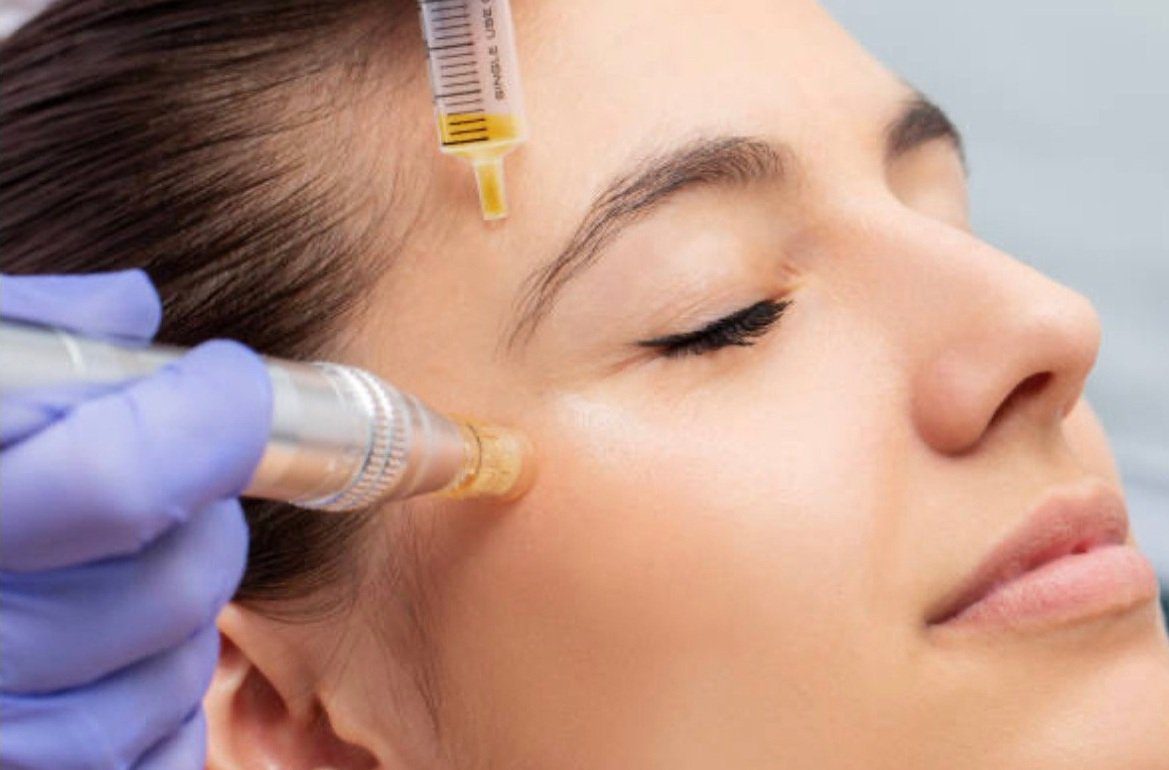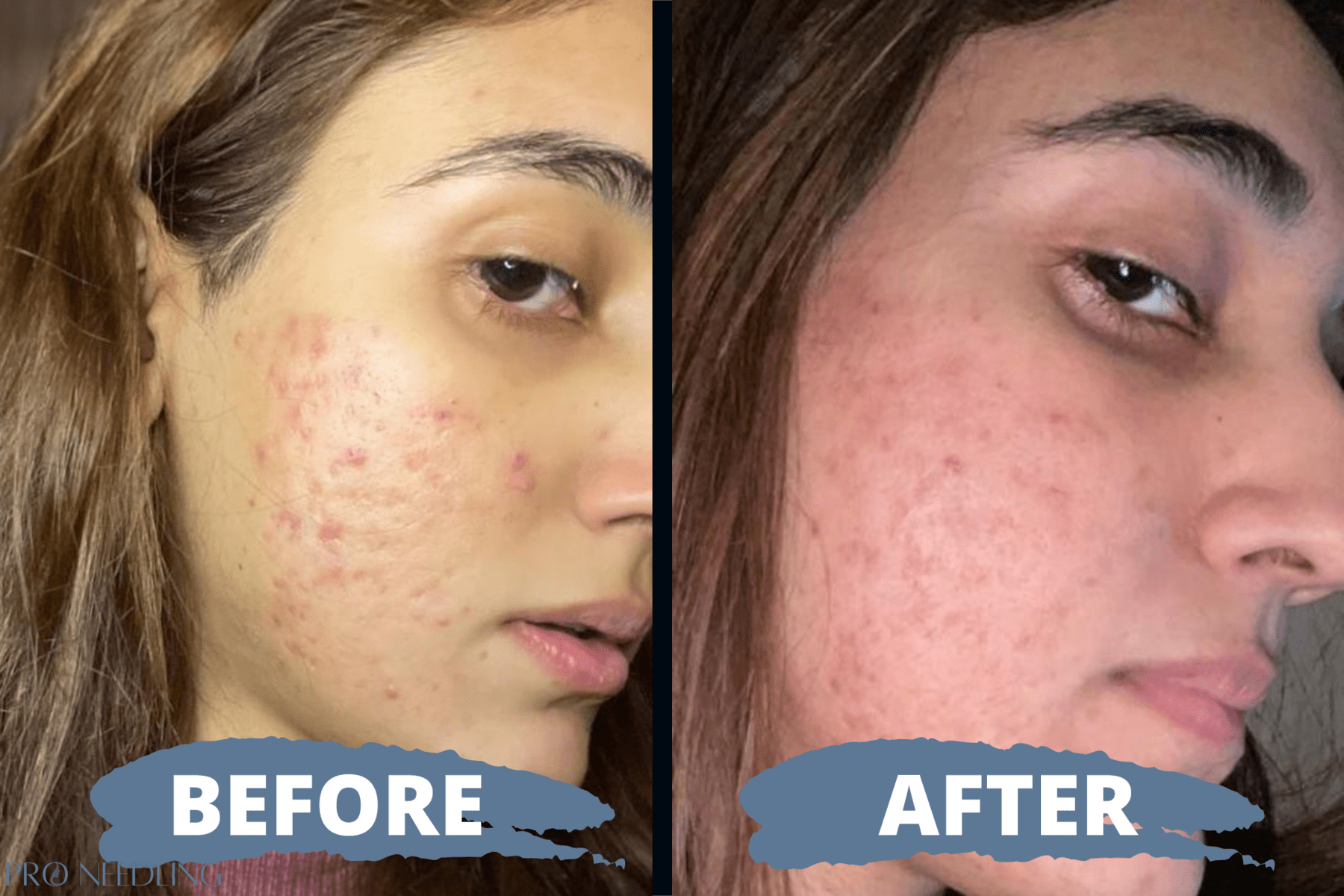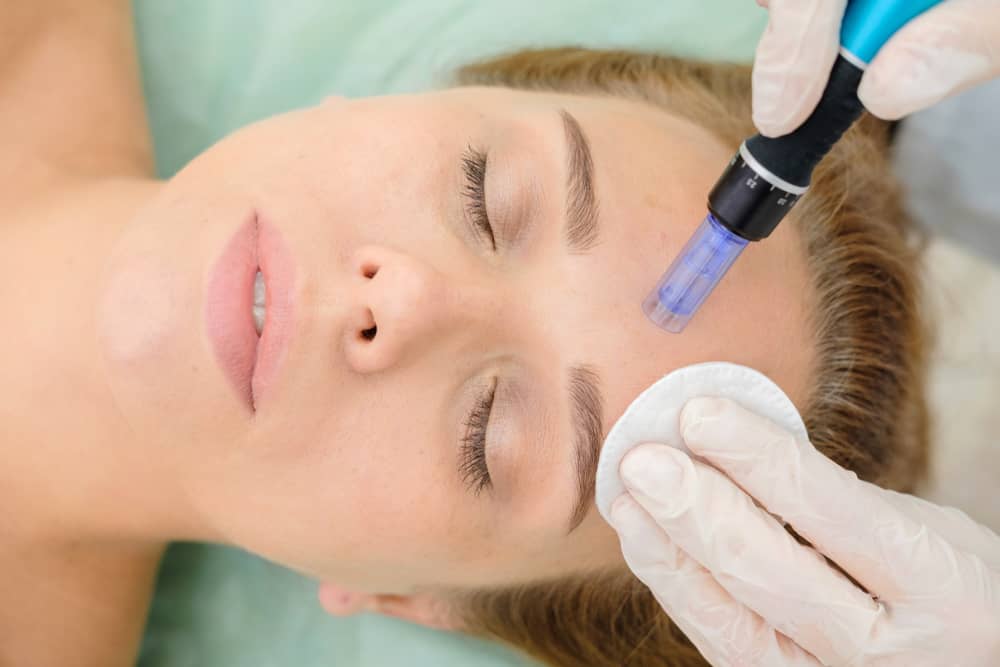
Microneedling has become a popular skincare treatment, and for good reason. This minimally invasive procedure offers a multitude of benefits for the skin, making it a go-to option for individuals looking to rejuvenate and revitalize their complexion. In Woodstock, Ontario, microneedling has gained traction as a sought-after treatment, with its ability to address a variety of skin concerns.
From diminishing fine lines and wrinkles to improving overall skin texture, microneedling has proven to be a transformative solution for many. In this comprehensive guide, we will delve into the intricacies of microneedling, exploring its mechanisms, benefits, targeted areas, costs, risks, and post-treatment care. Whether you’re considering this popular skincare service for the first time or seeking to enhance your existing knowledge, this article will equip you with essential information to make informed decisions about this innovative skincare procedure.
Contents
- 1 Many Tremendous Benefits of Microneedling in Woodstock, Ontario
- 1.1 What is Microneedling?
- 1.2 How Microneedling Works
- 1.3 Benefits of Microneedling
- 1.4 Targeted Areas for Microneedling
- 1.5 Cost of Microneedling
- 1.6 Risks and Side Effects of Microneedling
- 1.7 Preparing for Microneedling
- 1.8 Procedure for Microneedling
- 1.9 Post-Microneedling Care
- 1.10 Microneedling vs. Home Rollers
- 1.11 Frequently Asked Questions about Microneedling
- 1.11.1 What Microneedling Can Do for Your Skin
- 1.11.2 Optimal Skin Care After Microneedling
- 1.11.3 How Long Do Microneedling Results Last?
- 1.11.4 Number of Sessions Needed for Acne Scars
- 1.11.5 Microneedling Pros and Cons
- 1.11.6 Comparison: Microneedling vs. Botox
- 1.11.7 Benefits of Microneedling for Skin
- 1.11.8 Maximizing Microneedling Benefits
- 1.12 Contact Information Prestige Laser & Anti Aging Clinic
Many Tremendous Benefits of Microneedling in Woodstock, Ontario
Microneedling in Woodstock, Ontario offers numerous remarkable benefits for individuals seeking skin rejuvenation and improvement.
Microneedling can effectively reduce the appearance of fine lines, wrinkles, and acne scars, giving the skin a smoother and more youthful look. This procedure stimulates the production of collagen and elastin, essential proteins for maintaining skin strength and elasticity, which can significantly enhance the overall texture and firmness of the skin.
For residents of Woodstock, Ontario, undergoing microneedling treatments means having access to professional skincare providers who understand the unique skin concerns of the local climate and lifestyle, ensuring that the procedure is tailored to address specific environmental factors that may impact skin health.

What is Microneedling?
Microneedling is a dermatological procedure that involves the use of fine needles to create controlled micro-injuries in the skin, stimulating the production of collagen and elastin.
This procedure is often performed with a dermaroller or a microneedling penand is effective in treating various skin concerns, such as wrinkles, scars, and uneven skin texture. The micro-injuries caused by the needles trigger the skin’s natural healing response, leading to the generation of new collagen and elastin fibers, which are essential components for maintaining the skin’s firmness and elasticity.
Collagen provides structural support to the skin, while elastin contributes to its flexibility. Through the process of microneedling, the increased production of collagen and elastin helps in improving the overall texture, tone, and firmness of the skin, leading to a more youthful and rejuvenated appearance.
How Microneedling Works
Microneedling works by creating controlled micro-injuries in the skin, stimulating the natural production of collagen and elastin, which are essential for skin rejuvenation and healing.
This minimally invasive procedure involves the use of a specialized device with fine needles that puncture the skin, triggering the body’s wound healing response. As a result, collagen and elastin production increases, leading to improved skin texture, firmness, and overall appearance. Dermatologists are highly skilled in performing microneedling, ensuring precision and safety during the process. The treatment can target various skin concerns such as wrinkles, scars, and hyperpigmentation, offering a non-surgical solution for skin rejuvenation.
Benefits of Microneedling
The benefits of microneedling encompass improved skin appearance, enhanced collagen production, and the promotion of elastin for skin rejuvenation and healing.
Microneedling, also referred to as collagen induction therapy, involves the use of tiny needles to create controlled micro-injuries on the skin’s surface. These micro-injuries stimulate the skin’s natural healing process, leading to increased collagen and elastin production. As a result, the skin becomes firmer, smoother, and more radiant. Microneedling can improve the appearance of acne scars, fine lines, and wrinkles, making it a popular choice for those seeking to rejuvenate their skin without invasive procedures.
The treatment is known for its ability to enhance overall skin quality and texture, providing long-lasting benefits for individuals of varying skin types.

Targeted Areas for Microneedling
Microneedling is commonly used to target specific skin concerns such as scars, wrinkles, and fine lines, offering targeted rejuvenation for these areas.
In terms of scars, microneedling can help break down the tough, fibrous tissue that forms in scarred areas, promoting the growth of new, healthier skin cells. This procedure has also shown promising results in smoothing out wrinkles and fine lines by stimulating collagen and elastin production, which are essential for maintaining skin elasticity and firmness. The technique is not only effective on the face but can also be applied to areas such as the neck, décolletage, and hands, enhancing their appearance as well.
Cost of Microneedling
The cost of microneedling varies based on factors such as the number of sessions required and the expertise of the dermatologist performing the procedure.
The price of microneedling treatment is influenced by the recommended number of sessions. Some individuals may require multiple sessions to achieve their desired results, impacting the overall cost. The professional expertise of the dermatologist conducting the procedure can also influence pricing. Experienced and skilled dermatologists may charge higher fees for their services due to their advanced training and expertise. Therefore, when considering microneedling, it is essential to account for these factors in the overall cost assessment.
Risks and Side Effects of Microneedling
While microneedling is generally safe, it may present risks and side effects such as erythema, swelling, and potential complications, necessitating a thorough understanding of its safety considerations.
Microneedling, although a minimally invasive procedure, can lead to adverse reactions if not performed by a qualified professional or if post-care instructions are not followed diligently. Complications can include infection, scarring, and hyperpigmentation, emphasizing the importance of proper sterilization and aftercare. Individuals with a history of keloids or active skin infections should avoid microneedling to prevent exacerbating their conditions.

Preparing for Microneedling
Effective preparation for microneedling involves considerations for skin healing, the use of appropriate serums, and following the guidance provided by the dermatologist performing the procedure.
Before the microneedling procedure, it is crucial to ensure that the skin is adequately cleansed and free from any makeup or skincare products. This helps to minimize the risk of irritation or infection during the treatment. The dermatologist may also recommend special skincare routines to prepare the skin for microneedling, such as gentle exfoliation to remove dead skin cells and improve the overall efficacy of the treatment.
- It is important to carefully select serums that are suitable for post-microneedling application. These serums should be rich in hydrating and healing ingredients, such as hyaluronic acid and vitamin C, to aid in the skin’s recovery process. Gentle patting of the serum onto the treated area can offer soothing relief and promote optimal healing.
- Receiving guidance from a reputable dermatologist is fundamental in ensuring that the microneedling procedure is tailored to individual skin needs and concerns. Professionals can assess the skin’s condition, prescribe appropriate pre-treatment care, and monitor the healing process post-procedure. This personalized approach greatly enhances the efficacy and safety of microneedling.
Procedure for Microneedling
The procedure for microneedling involves the use of specialized needles by a dermatologist, typically preceded by a consultation to assess the patient’s suitability for the treatment.
Microneedling, also known as collagen induction therapy, is a minimally invasive cosmetic procedure that aims to rejuvenate the skin. The dermatologist begins by examining the patient’s skin and discussing their goals to determine the most appropriate treatment plan.
During the procedure, the specialized needles create tiny punctures in the skin, stimulating the body’s natural healing process and promoting the production of collagen and elastin for smoother, firmer skin.

Post-Microneedling Care
Post-microneedling care involves managing downtime, protecting the skin from sun exposure, and seeking guidance from a specialist to optimize the healing process.
After microneedling, it’s important to minimize sun exposure to prevent potential sun damage to the skin, which can exacerbate the sensitivity and irritation. This involves diligently applying a broad-spectrum sunscreen with a high SPF. Utilizing gentle skincare products and avoiding harsh chemicals can aid in reducing downtime and promoting quicker healing. Seeking professional advice from a dermatologist or an aesthetician is highly recommended for personalized post-procedure care, as they can provide tailored recommendations based on individual skin types and concerns.
Microneedling vs. Home Rollers
The comparison between microneedling performed by professionals and home derma rollers involves considerations for the expertise of dermatologists and the safety of the procedure.
Professional microneedling treatments are generally conducted in a clinical setting by board-certified dermatologists or licensed cosmetic surgeons, ensuring a high level of expertise and adherence to strict safety standards. The use of medical-grade instruments and customized treatment plans tailored to individual skin conditions under the supervision of trained professionals enhance the efficacy and safety of microneedling.
In contrast, home derma rollers lack the precision and oversight that come with professional treatments, potentially posing a higher risk of infection, scarring, and inconsistent results due to improper technique and inadequate sterilization practices.
Frequently Asked Questions about Microneedling
Addressing frequently asked questions about microneedling provides valuable insights for patients, covering aspects such as insurance coverage and patient experiences.
One common question patients have is whether microneedling is covered by insurance. It’s important to note that insurance coverage for microneedling can vary depending on individual insurance plans and the reason for undergoing the procedure. Some insurance plans may cover microneedling if it is deemed medically necessary for treating certain skin conditions, while others may consider it a cosmetic procedure and not provide coverage. Patients are encouraged to check with their insurance providers to understand the extent of coverage for microneedling.

What Microneedling Can Do for Your Skin
Microneedling offers a transformative impact on the skin, addressing concerns such as wrinkles, scars, discoloration, and promoting the production of elastin and collagen for enhanced skin health.
Through the controlled creation of microscopic punctures in the skin, microneedling stimulates the body’s natural healing process, triggering the production of elastin and collagen, building a firmer, smoother skin texture. This process also helps in reducing the appearance of fine lines, wrinkles, and acne scars, improving overall skin tone and texture.
Optimal Skin Care After Microneedling
Optimal skin care after microneedling is crucial for effective healing and rejuvenation, involving the use of appropriate serums and guidance from dermatologists to enhance post-treatment results.
After microneedling, the skin undergoes a healing process, making it vital to follow a meticulous skincare routine. The use of a high-quality serum containing potent ingredients such as hyaluronic acid, vitamin C, and growth factors can greatly aid in stimulating collagen production and accelerating the skin’s recovery. It is essential to consult with a dermatologist who can recommend personalized post-microneedling skin care regimen tailored to individual skin needs. Professional guidance ensures the proper selection and application of serums, maximizing the benefits of the treatment.
How Long Do Microneedling Results Last?

Understanding the longevity of microneedling results is essential, with the treatment offering prolonged efficacy in skin rejuvenation, although individual responses may vary.
Microneedling results can typically be seen within a few weeks after the initial treatment, with continued improvement in skin texture and appearance over time. The collagen production stimulated by microneedling contributes to the long-term effects, with many individuals experiencing benefits for several months to even years. Factors such as age, skin condition, and lifestyle habits can influence the duration of results, emphasizing the importance of a customized approach to treatment.
Number of Sessions Needed for Acne Scars
Determining the required number of microneedling sessions for addressing acne scars involves consultations with dermatologists, considering individual skin responses and the severity of the scars.
Microneedling, a minimally invasive cosmetic procedure, can significantly improve the appearance of acne scars by stimulating collagen production and promoting skin renewal.
During the initial dermatologist consultation, the severity and depth of the acne scars will be assessed, and a personalized treatment plan will be devised based on the individual’s unique skin type and condition.
Factors such as the type of acne scars, the patient’s overall skin health, and the desired level of improvement will also influence the recommended number of microneedling sessions.
Microneedling Pros and Cons
Evaluating the pros and cons of microneedling provides a balanced perspective on its associated risks and benefits, enableing individuals to make informed decisions about the procedure.
Microneedling, also known as collagen induction therapy, offers several benefits such as improving skin texture, reducing the appearance of scars, wrinkles, and stretch marks. It can stimulate collagen production, leading to firmer and smoother skin. The procedure is minimally invasive, with minimal downtime and relatively low risk of adverse effects.
On the other hand, microneedling may not be suitable for individuals with certain skin conditions, such as active acne or eczema. There is also a risk of infection or skin irritation if not performed by a trained professional. Some people may experience mild discomfort during and after the treatment.
Comparison: Microneedling vs. Botox

Comparing microneedling with Botox offers insights into their respective efficacy in addressing concerns such as wrinkles and fine lines, highlighting the distinct mechanisms and outcomes of each treatment.
While Botox works by temporarily paralyzing the muscles beneath the skin, reducing the appearance of wrinkles, microneedling stimulates the body’s natural collagen production through the use of tiny needles that create micro-injuries. This collagen production helps plump the skin and reduce the appearance of fine lines, providing a more natural and gradual improvement compared to the quick-acting nature of Botox.
Microneedling can address various skin concerns beyond wrinkles and fine lines, such as acne scars and uneven skin texture, making it a versatile treatment option for overall skin rejuvenation.
Benefits of Microneedling for Skin
The benefits of microneedling for skin encompass comprehensive rejuvenation, leveraging the natural production of collagen and elastin to enhance skin texture and resilience.
Microneedling, also known as collagen induction therapy, involves the use of fine needles to create micro-injuries on the skin’s surface. These tiny punctures stimulate the skin’s natural healing process, prompting increased collagen and elastin production. As a result, microneedling effectively reduces the appearance of wrinkles, fine lines, and acne scars. This non-invasive procedure promotes a more even skin tone and enhances the overall texture, contributing to a youthful and radiant complexion.
Maximizing Microneedling Benefits
Maximizing the benefits of microneedling involves adherence to post-care recommendations and seeking guidance from dermatologists to optimize the rejuvenation and healing process.
Post-care adherence is crucial as it supports the skin’s recovery and enhances the effectiveness of microneedling. Dermatologists play a critical role in tailoring post-care routines to individual skin needs, addressing concerns, and ensuring safe and effective aftercare. They provide valuable insights into skincare products, sun protection, and lifestyle adjustments that can promote the healing and long-term outcomes. By consulting with professionals, patients can harness the full potential of microneedling for a radiant, rejuvenated complexion.






